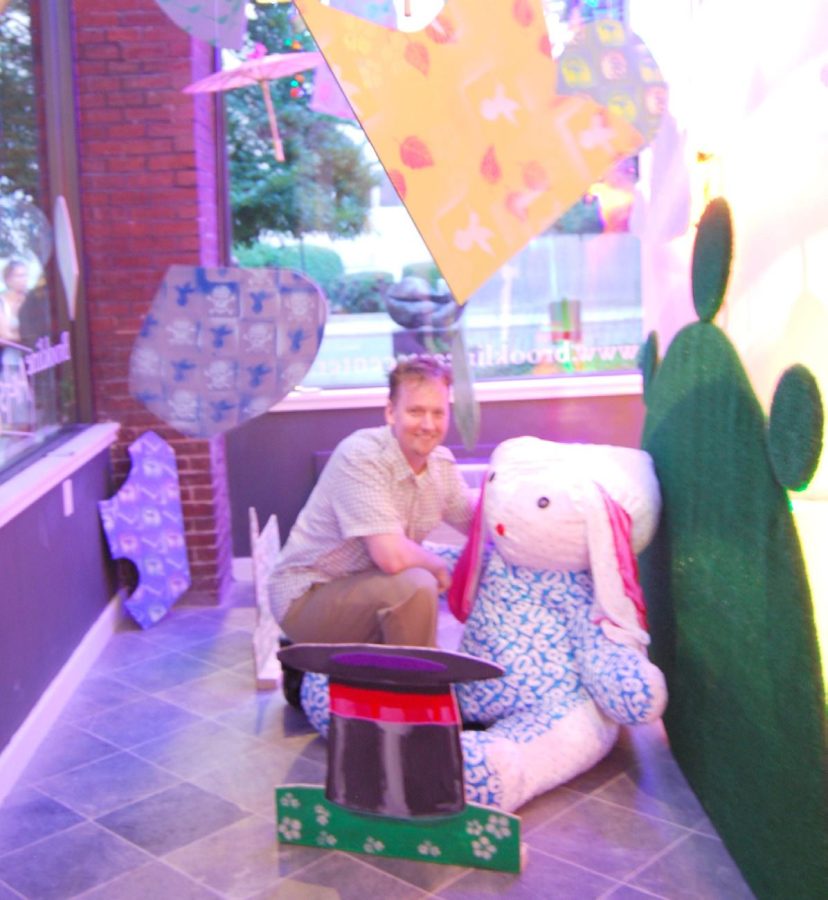In Joe Kitsch’s world, everything is always changing. All that we know to be real may just be a product of our perceptions. The Boston-based artist is by no measure a new kid on the block. Kitsch has produced and showcased a wide spectrum of work including paintings and sculptures in a variety of media across New England as well as New York City since 1999. On his blog, he refers to himself as a “conceptually oriented pop artist.” “I use appropriation and the language of Eclectic Post-Modernism to focus on issues of being, identity and perceptions,” he writes. Kitsch’s work and persona are layered with meanings and messages that perme¬ate the visible surface. Even his brush name is a testament to this. He chose “Joe” for its simplicity and usualness. “‘Kitsch is pretentious bad taste,” he writes on his website. “On some level, all art is kitsch. The thing that makes a distinction within itself is quality; what makes some kitsch better than other kitsch is what one puts into it, mentally and physically. Kitsch is not unlike peo¬ple. With people, there are sociological as well as physical distinctions. Strip that all away and the only thing left is human beings. The distinction between people, like kitsch, is their qualities.” Kitsch recently had a show, titled “Mad, Mad, Mad World”, at the Brookline Arts Center. The exhibition, spanning two floors, relayed his idea that the world we live in is changing every minute, and that we only notice a fraction of these changes. This was especially evident in a series of small paintings of rabbits on the second floor. In these paintings, Kitsch used white acrylic paint, creating different tex¬tures and thicknesses. The vantage point and the lighting played a major role in the viewing experience. “Light changes its direction at different times of the day, and at these different times, as light falls on these paintings, the viewer’s perception of the rabbit’s presence or lack thereof in the picture changes,” Kitsch explained at the opening night of the exhibit. The rabbit also made an appearance in the main installation, in the form of a giant, stuffed, plush toy seated amongst star shaped lights, oriental parasols, and miscellaneous colorful wooden cutouts. According to the information on the wall, the recurring rabbit in Kitsch’s work “may have come to represent the illusory nature of existence and the central role of observership in the creation of reality.” In designing and arranging the differ¬ent elements of the installation, Kitsch used the concept of fractals, meaning that in a way, each piece of the instal¬lation is a smaller copy of the whole. Kitsch explained that together, these elements represent a growing higher unity of knowledge, especially scientific knowledge, in the world. Joe Kitsch’s work tugs at our sleeves, asking us to follow him into an alternate realm where we might be able to con¬template the otherworldly nature of our existence, and perhaps to deepen our awareness of the changing order of the universe. His wide-ranging work can be viewed on his website at http://www.joekitsch. com.
Latest Stories
- Environmental leaders spark change at the Community Action Works Summit
- Massachusetts partners with local nonprofit to support Summer Eats program
- Day Three: Chappell Roan, Hozier, and The Killers bring Boston Calling to a Spectacular Finish
- Boston Calling Day Two: Jessie Murph, The Red Clay Strays, and Tyler Childers Light Up the Stage
- Boston Calling Day One: Luke Hemmings, David Kushner, Renee Rapp, and Ed Sheeran.
- Semester reflections: A mix of emotions in the journey of higher education
- Celebrate AANHPI Heritage Month with these must-read books
- Liberation through tradition: Passover in a time of genocide
- Karla Corres Luna wins a Fulbright Award
- Get creative with the UMass Boston Art Club
63°





















































